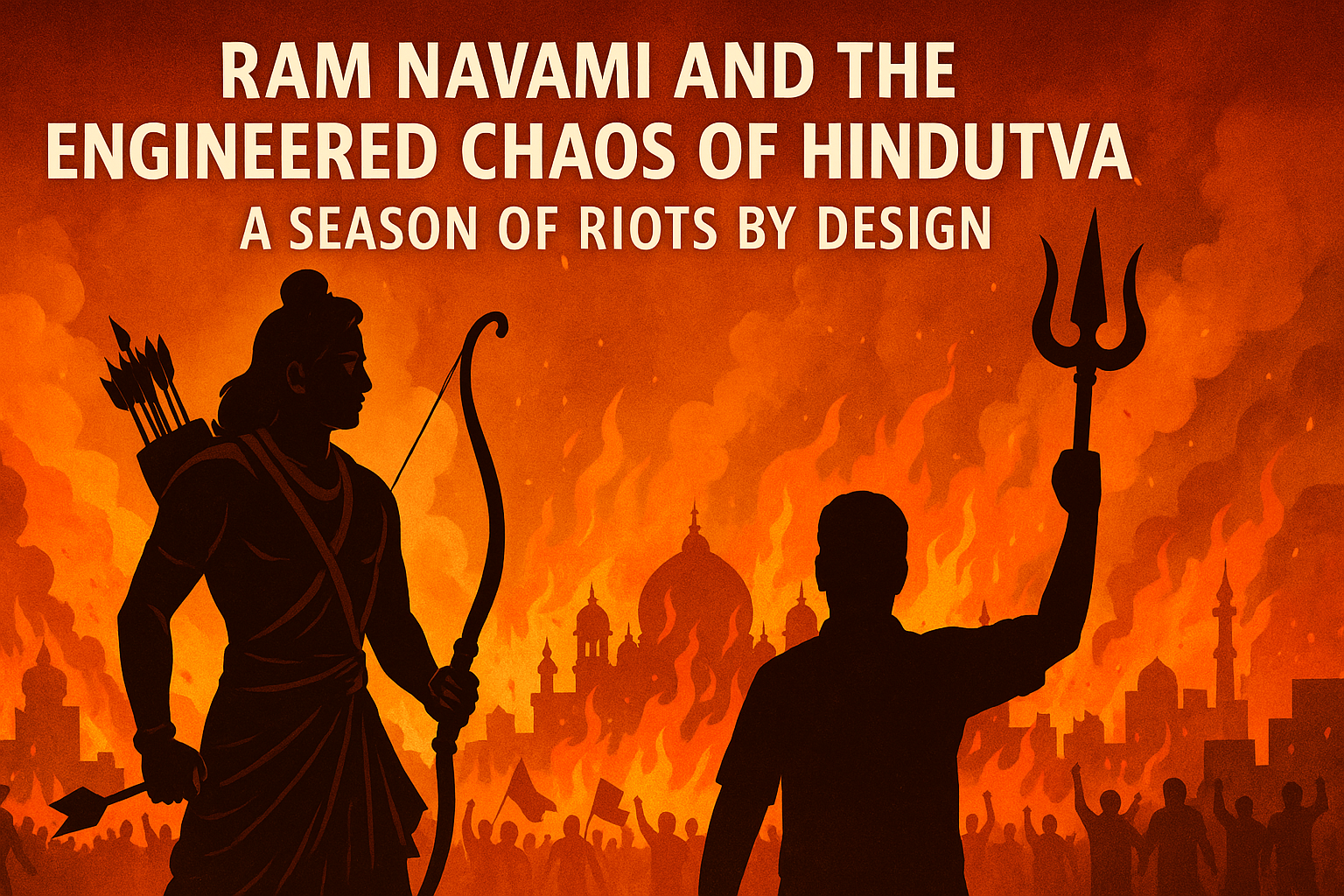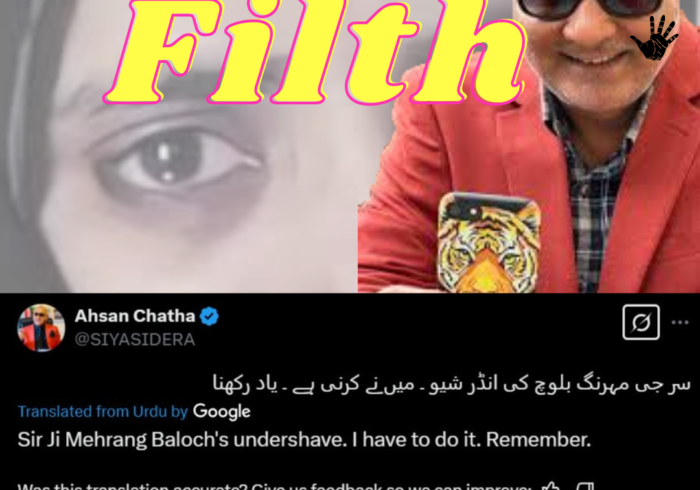In Narendra Modi’s India, riots don’t erupt spontaneously from community tensions — they are manufactured, meticulously scripted, and deployed with precision timing. What we are witnessing today isn’t communalism run amok; it is state-enabled, state-encouraged, and, most chillingly, state-celebrated violence cloaked in the garb of religion.
At the heart of this orchestrated discord lies Ram Navami — a Hindu festival that has been weaponized into an annual carnival of fear and aggression. It’s not just about Ram; it’s about how his name has been conscripted by the Rashtriya Swayamsevak Sangh (RSS) and its political arm, the Bharatiya Janata Party (BJP), to manufacture hate, provoke riots, and polarize the electorate.
A History Written in Blood
It is often claimed that India’s descent into communal violence began with Narendra Modi. While Modi has certainly turbocharged the process with his strategic silence and dog-whistle politics, the blueprint predates him — back to 1990, with L.K. Advani’s Rath Yatra, and even earlier, with the Babri Masjid demolition movement. These events laid the ideological and emotional foundation of what has become a carefully engineered culture of majoritarian supremacy.
But it was Ram Navami, more than any other occasion that morphed into a flashpoint. From 1967 onwards, this festival has recurrently served as the launchpad for premeditated communal riots. Unlike other Hindu festivals — Holi, Diwali, or even Dussehra — Ram Navami parades are now synonymous with open weaponry, inflammatory slogans, and deliberate marches through Muslim-dominated areas. These are not processions. They are provocations with a purpose.
RSS and the Cult of Ram

The RSS, founded on Ram Navami day in 1926, has long cultivated the image of Ram as the perfect Hindu warrior king — a symbol of discipline, masculinity, and control. Their saffron flag is said to represent Ram himself. For an outfit that prides itself on uniformity and ideological rigidity, the transformation of a complex, compassionate deity into a mascot of majoritarian violence was a political masterstroke.
Throughout the 1980s and 90s, the RSS strategically outsourced its rabble-rousing to the Vishwa Hindu Parishad (VHP). This enabled plausible deniability while weaponizing religious sentiment to create a consolidated Hindu vote bank. The infamous 1979 Jamshedpur riots, directly attributed to an RSS-led campaign, were a bloody rehearsal of what was to come: 108 dead, mostly Muslims. And yet, no accountability. No justice.
Modi’s Gujarat Model Goes National
When Modi rose to national power in 2014, he brought with him the Gujarat model — not of development, but of divisive governance. Riots, which once were localized and sporadic, became systematic and seasonal. Ram Navami became the chosen date to stoke tensions, especially in states where the BJP needed to galvanize Hindu support — West Bengal being a prime example.
Since 2017, Bengal — a state with no deep-rooted tradition of Ram worship during Chaitra — has seen aggressive, saffron-draped processions complete with motorbikes, swords, and trishuls, openly parading through sensitive Muslim neighborhoods. This is not faith; this is fascism in festive disguise.
And it’s not just Bengal. In 2022 and 2023, violent Ram Navami clashes were reported in West Bengal, Bihar, Gujarat, Maharashtra, Karnataka, and Delhi. Each riot follows a pattern: processions armed and aggressive, provocative slogans shouted near mosques, followed by retaliatory clashes, selective police crackdown on Muslims, and loud cries of Hindu victimhood from BJP leaders. It’s a playbook perfected and repeated.
Riots by Design, Impunity by Default

In Modi’s India, rioters don’t fear consequences — they are often rewarded. From lynch mobs becoming MLAs to hate speech experts finding cabinet berths, the message is loud and clear: bigotry pays.
This year is no different. As Ram Navami (April 6) approaches, West Bengal BJP leader Suvendu Adhikari has already announced plans for 2,000 rallies with explicit calls for Hindus to “show their might”. This isn’t grassroots devotion. It is top-down incitement, blessed by the political leadership and protected by the police.
Add to that the recent amendments to the Waqf Act, and you have a cocktail of simmering resentment, legal disenfranchisement, and social alienation — particularly aimed at India’s Muslims.
Ram as a Political Weapon
It is a bitter irony that Ram — the maryada purushottam, known for his restraint, dignity, and adherence to dharma — is now invoked in the name of lawlessness, hatred, and bloodshed. The Ram of Valmiki and Tulsidas would scarcely recognize this violent avatar carved out by the Sangh Parivar.
But perhaps that’s the point. The RSS and BJP don’t need Ram the spiritual figure — they need Ram the political mascot, Ram the Hindu warrior, Ram the eternal grievance. And as long as this caricature serves to divide and dominate, the riots will keep returning, every Ram Navami.
Democracy at the Edge
India today teeters on the edge of a cliff. Pluralism is mocked, dissent is criminalized, and minorities live under siege. What we are facing is not an aberration but a carefully calculated campaign to erase the soul of secular India. Ram Navami is just one of many tools in this sinister arsenal.
As long as this regime is allowed to drape itself in saffron while wielding the trident of hate, no festival will be safe, no community secure, and no future assured.
The author Ramsha Waheed holds a Master’s degree in English Literature with expertise in research and content writing.
You can reach her at ramshawaheed01@gmail.com.





